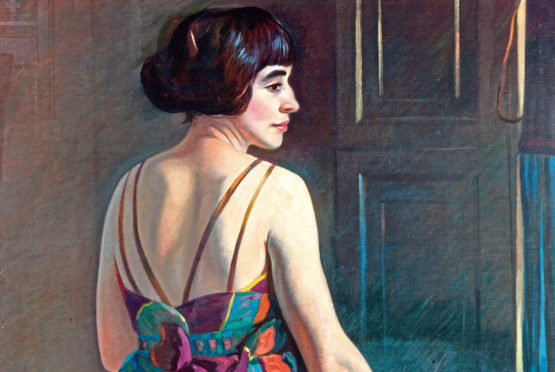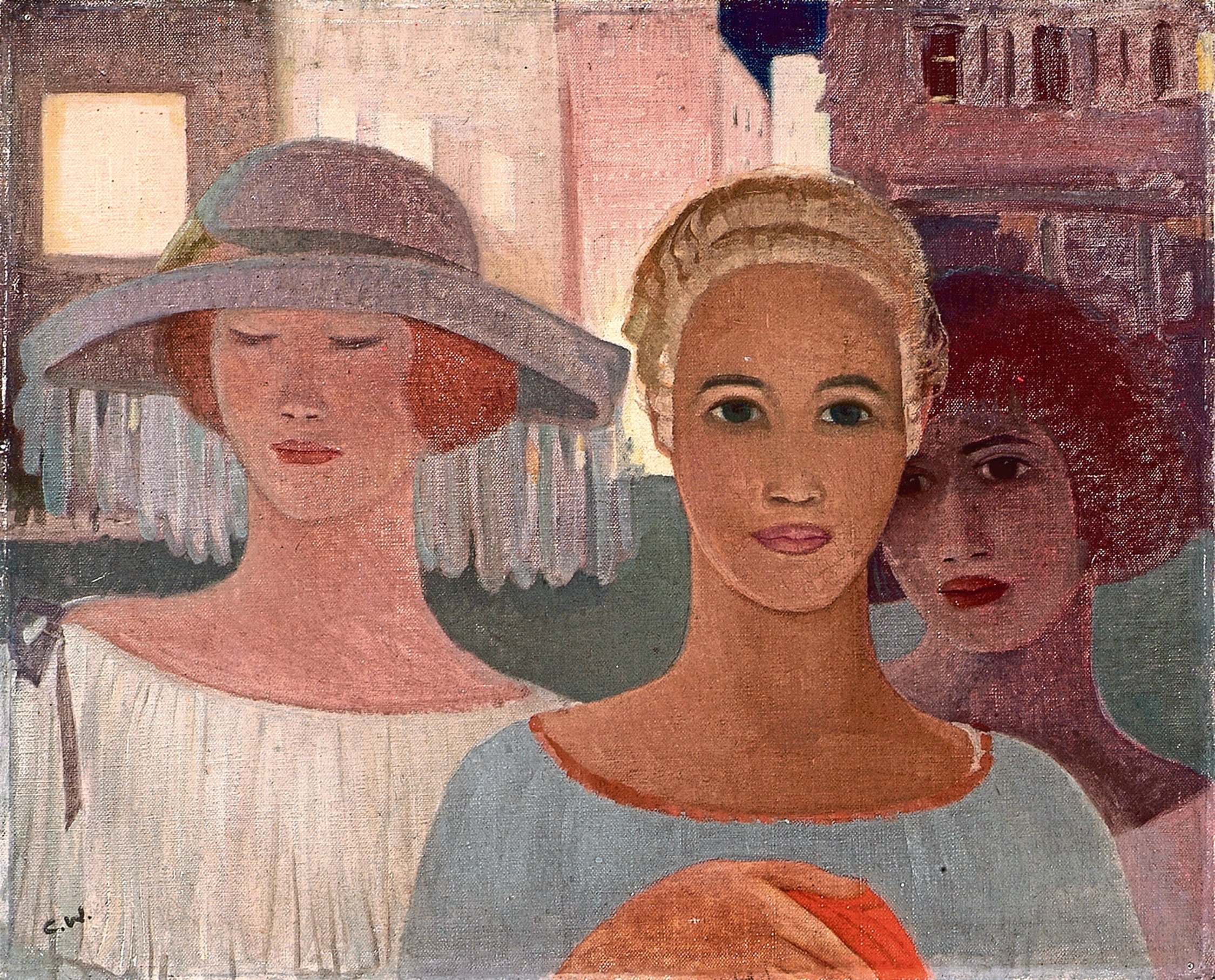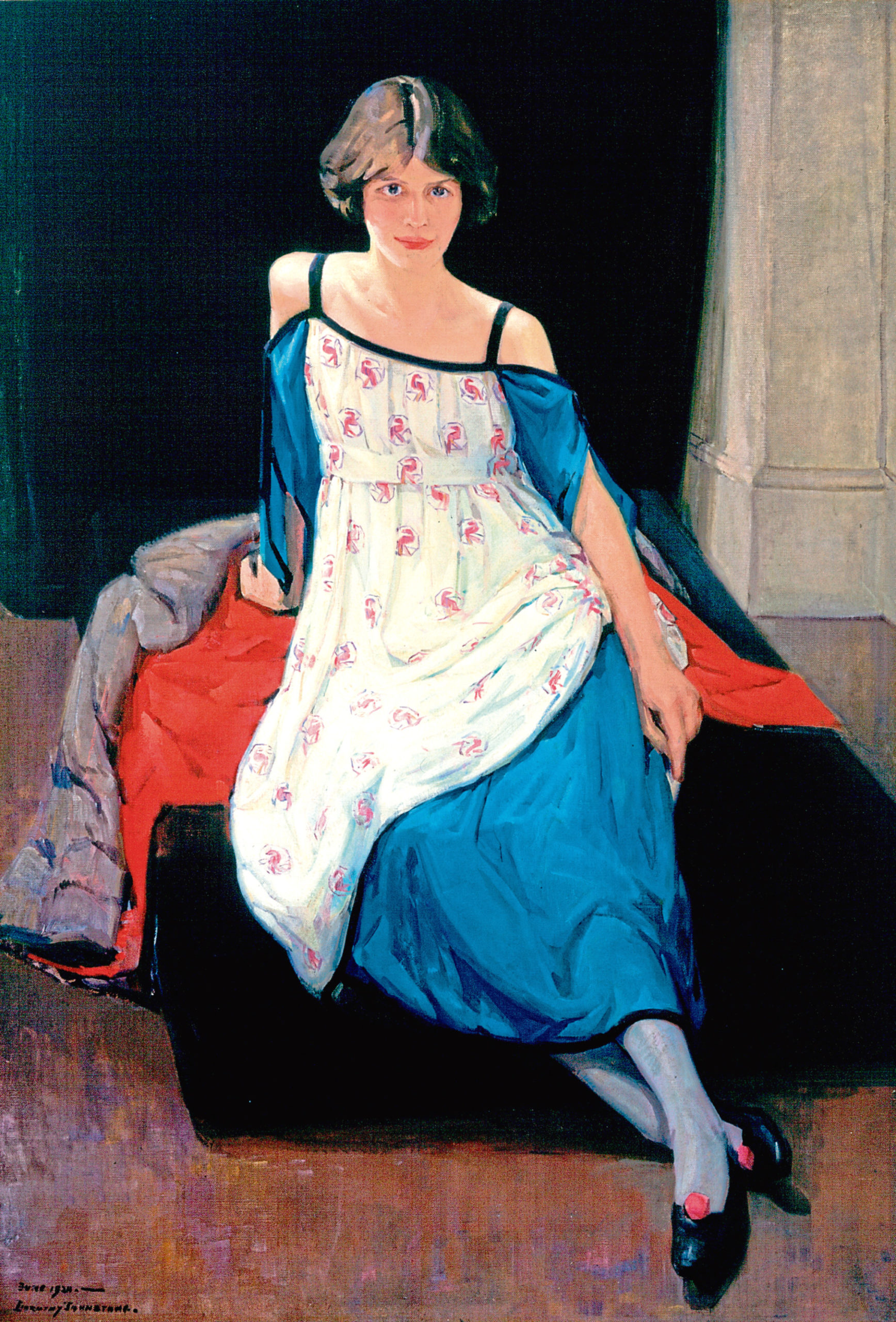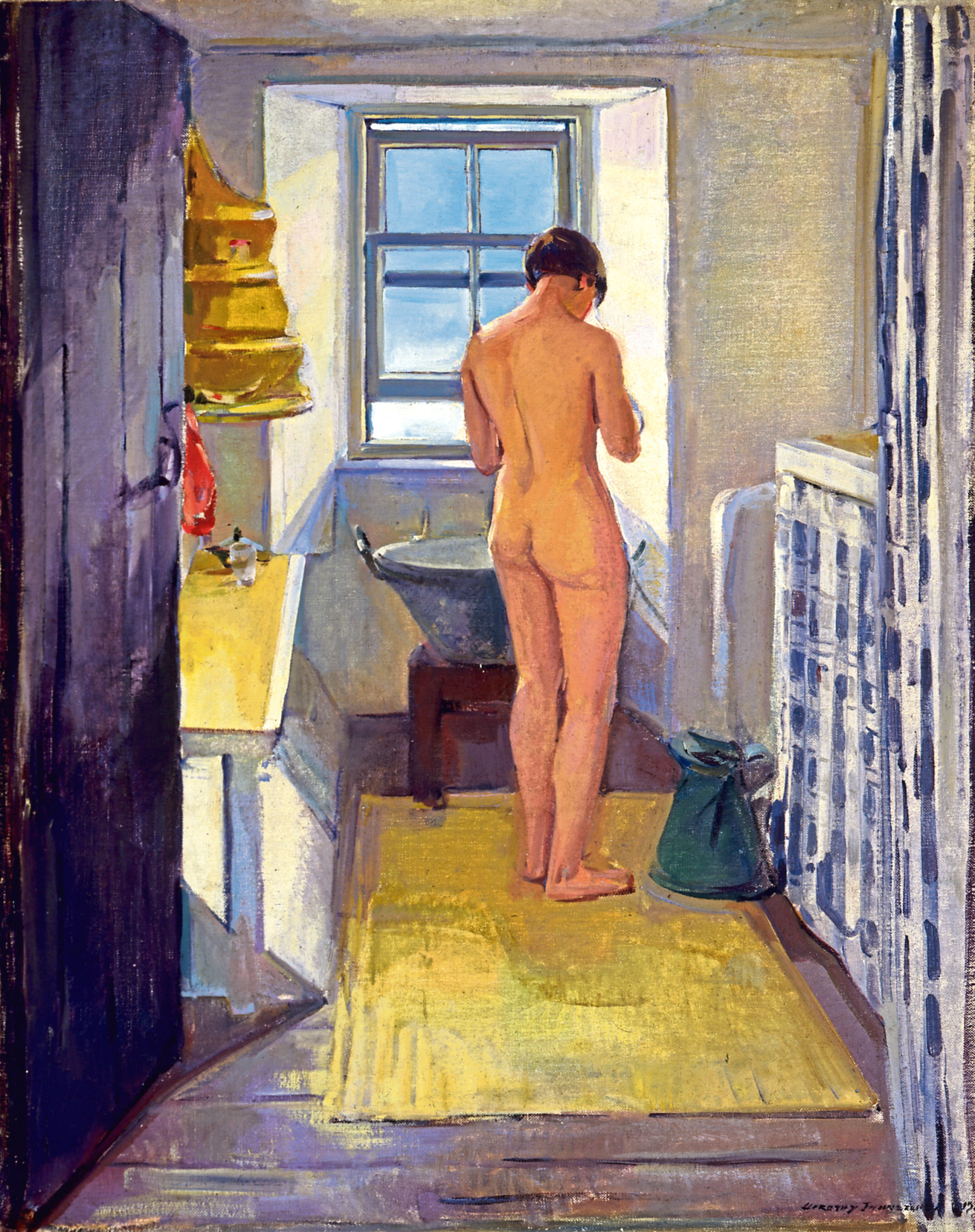In the week of International Women’s Day these artworks give a glimpse at friendship, female empowerment and life in the flapper era. Girl power 1920s-style had arrived.
It’s been 100 years since friends and colleagues Dorothy Johnstone (1892–1980), Cecile Walton (1891–1956), Dorothy Nesbitt (1895–1971) and Anne Finlay (1898–1963) were part of the Edinburgh Group, a group of artists all connected through Edinburgh College of Art and their involvement wtih the Royal Scottish Academy, Society of Scottish Artists and the Royal Scottish Society of Painters in Watercolour.
The striking portrait of Anne Finlay was painted by her teacher at Edinburgh College of Art, Dorothy Johnstone. Finlay is depicted in a daring and vibrant off-the-shoulder dress. Imposing and commanding, the sitter’s unflinching and arresting gaze radiates vivaciousness, freedom and power.
Female artists were excluded from life drawing classes in Scottish art schools in the 1920s. As a result, many women modelled for their fellow artists. We have fabulous examples of this in the collection, including Anne Finlay and Black and Yellow.
The Black Coat by Dorothy Johnstone shows Anne Finlay wearing a coat and hat typical of the 1920s. Modelling was done partly out of economic necessity and it allowed the artist freedom to experiment.
In 1924 Dorothy Johnstone married and due to Marriage Barr legislation which restricted the employment of married women, she was forced to end her teaching career. She continued to exhibit her portraits and landscapes at the Royal Scottish Academy, to which she was elected an associate in 1962.
Anne Finlay regularly exhibited at The Royal Academy in London, the Royal Scottish Academy, and as part of the Society of Women Artists between 1934 and 1956.
Eric Robertson’s portrait Cecile depicts his wife, Cecile Walton. She was a talented artist and they were both founding members of the Edinburgh Group. This strikingly modern portrait portrays Walton in profile with a daringly bare back.
Cecile Walton painted Vienna at Night. The figure on the left is Dorothy Johnstone; the other women are thought to be refugees who were travelling with the pair. The women in this painting are shown as confident and independent, perhaps excited by their new surroundings.
See these paintings in Gallery 14: Art of Empowerment at Aberdeen Art Gallery. Admission free. Open 7 days.



